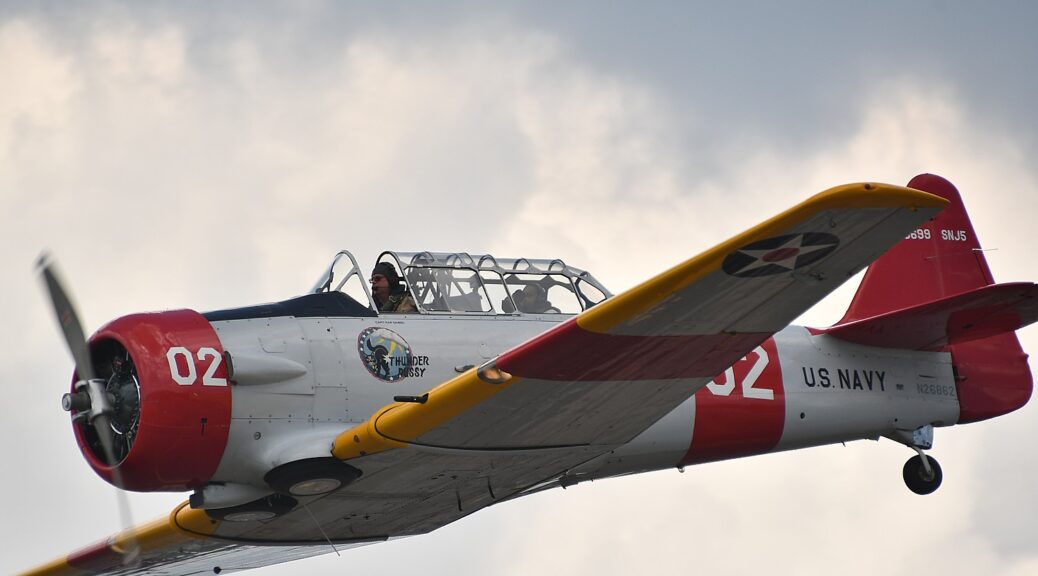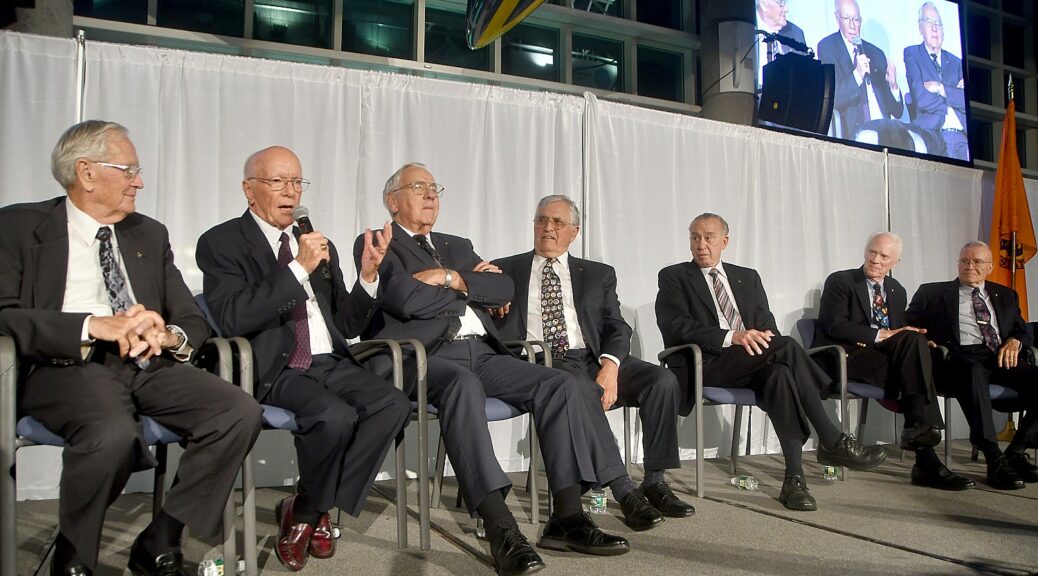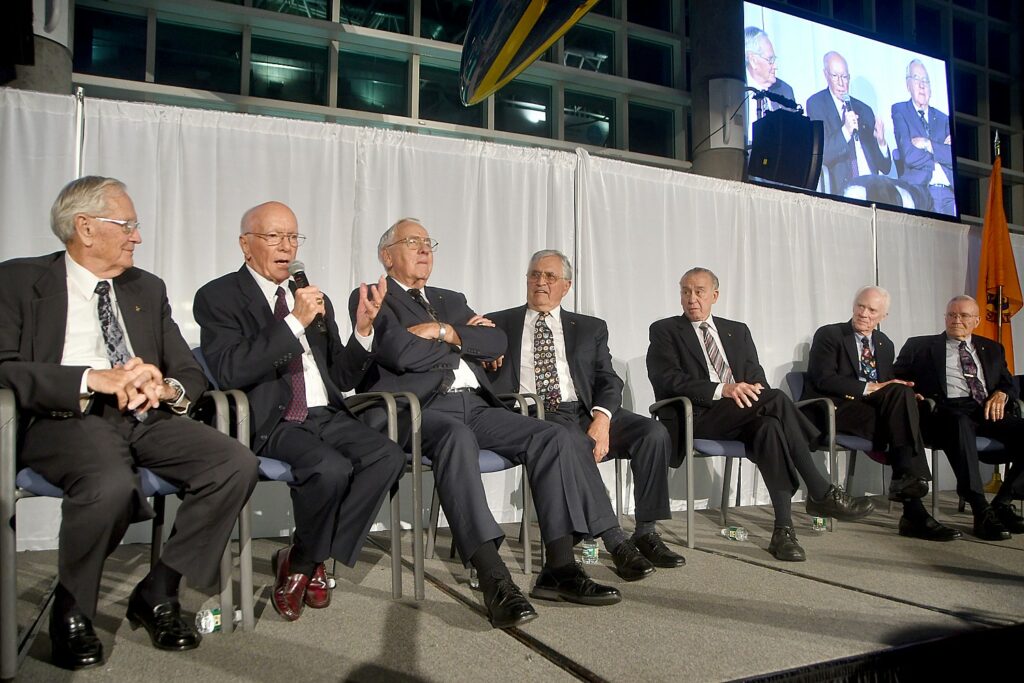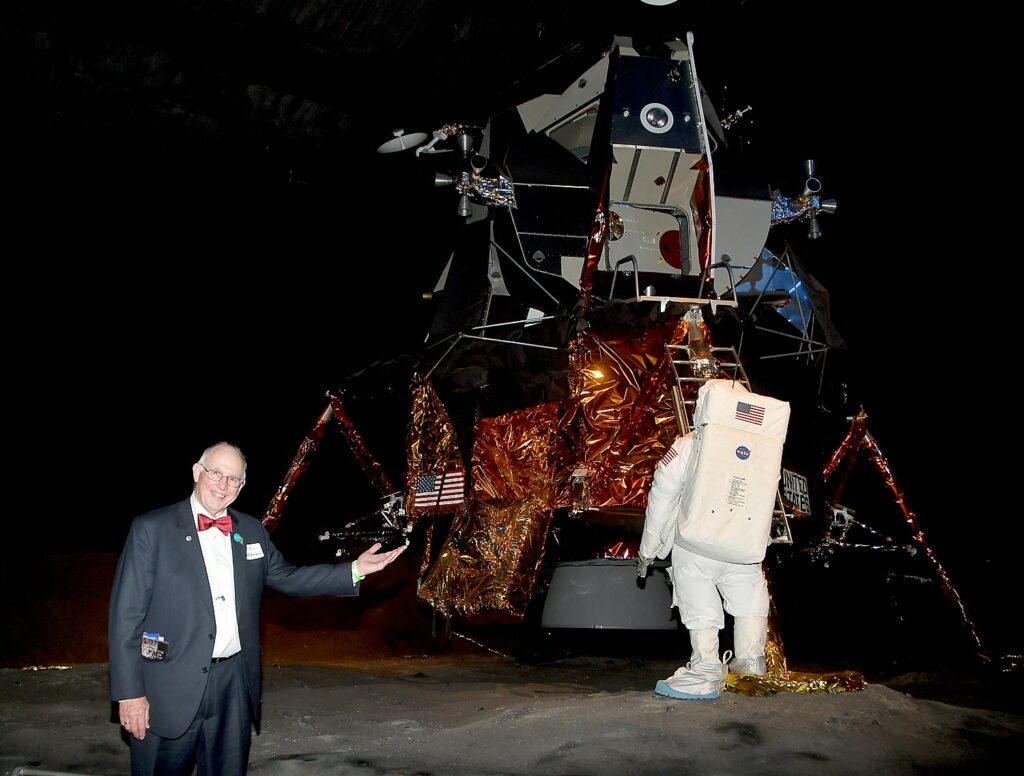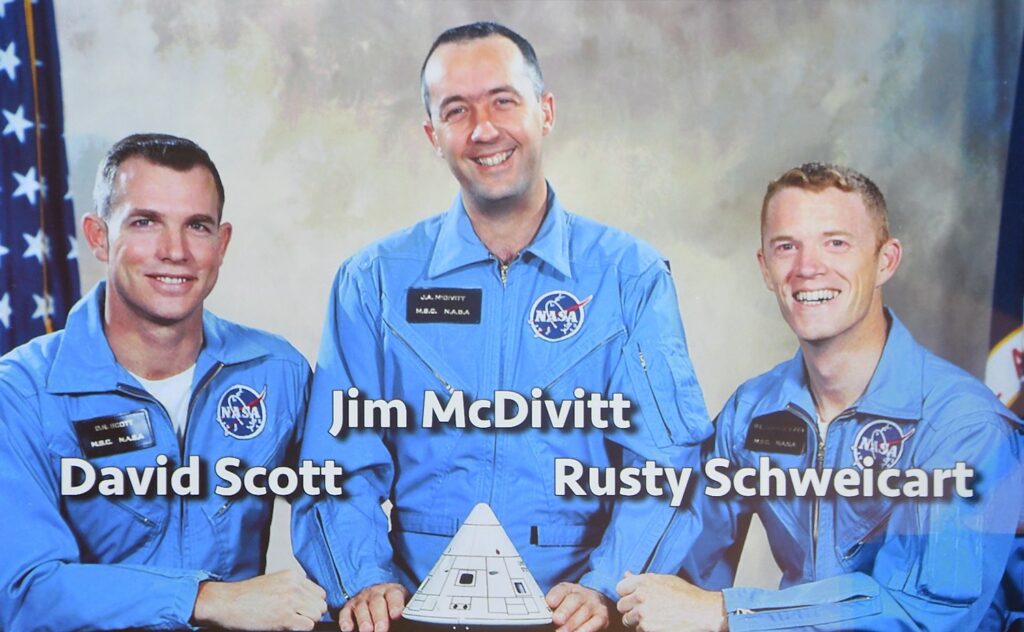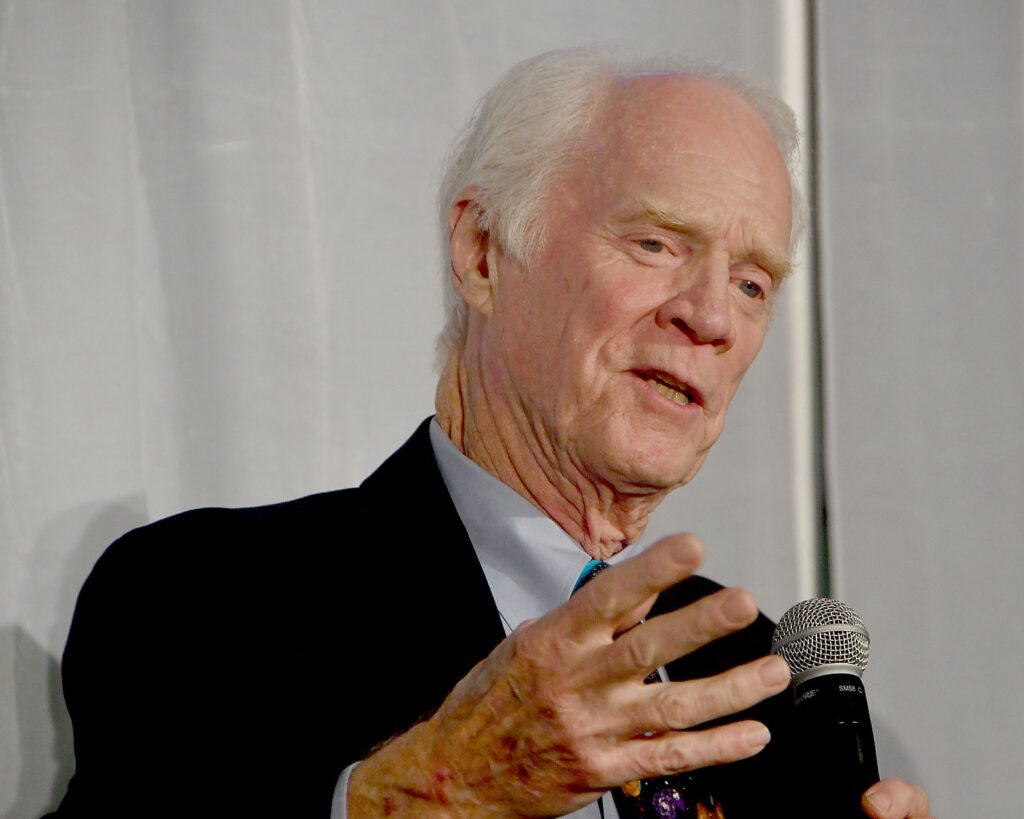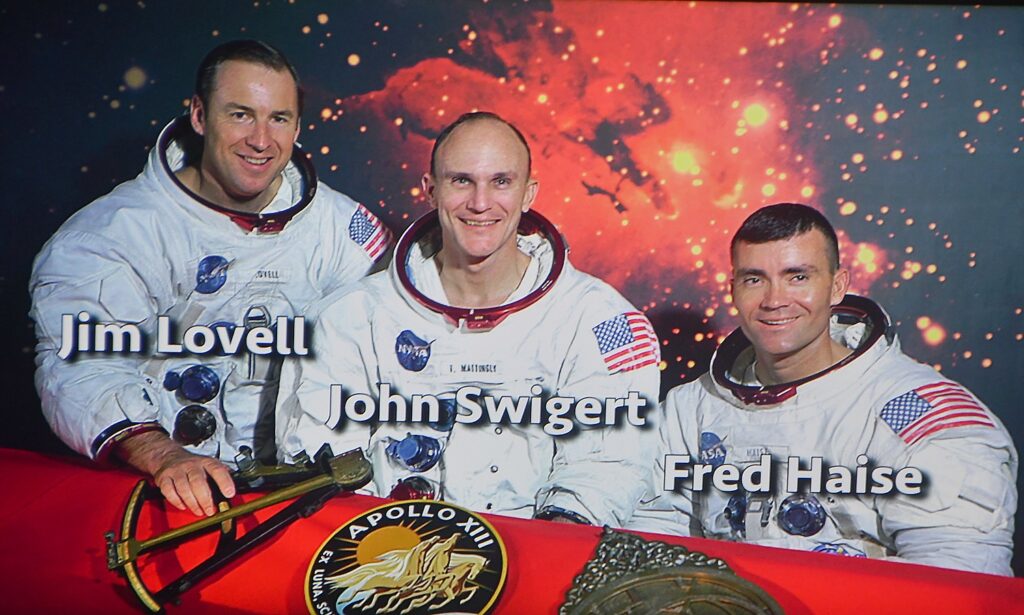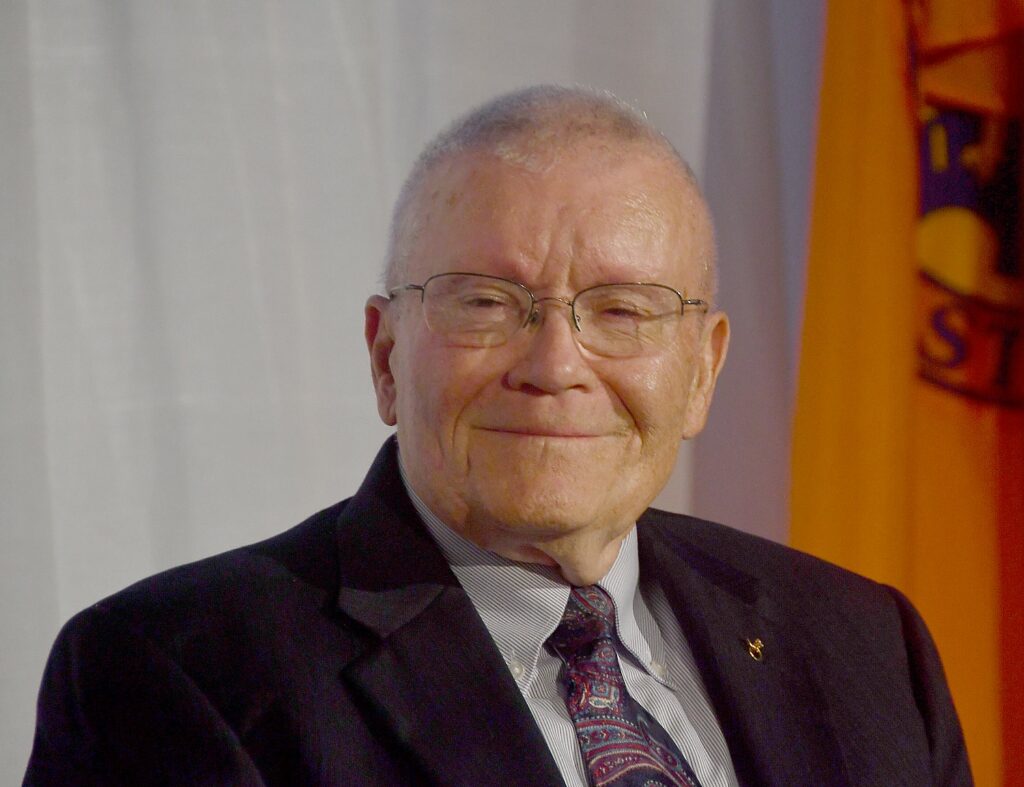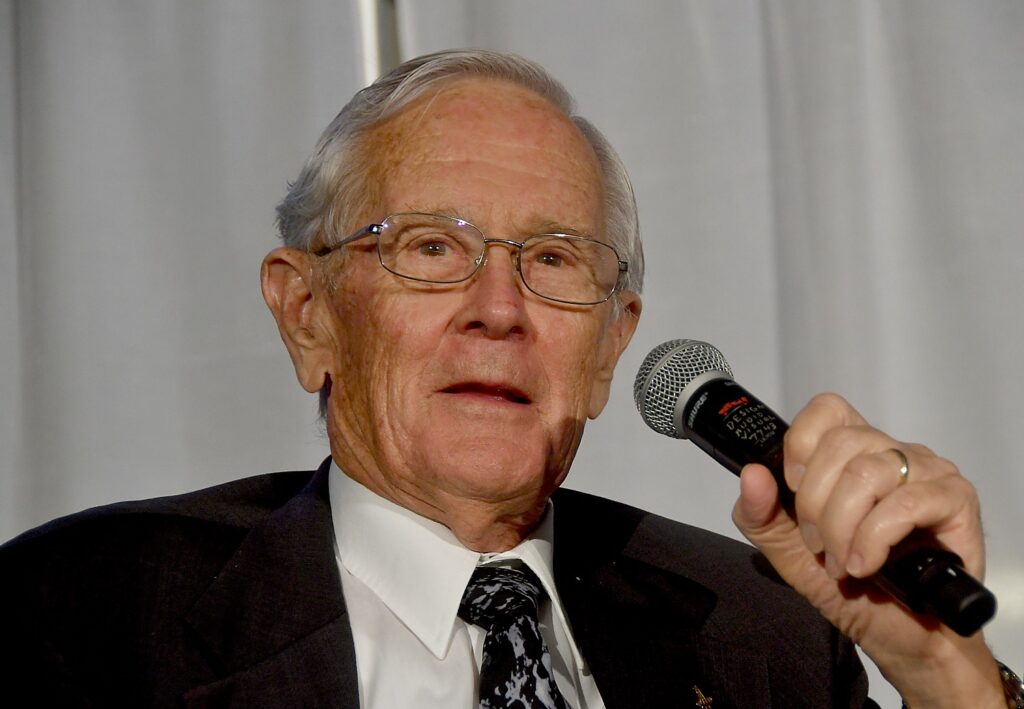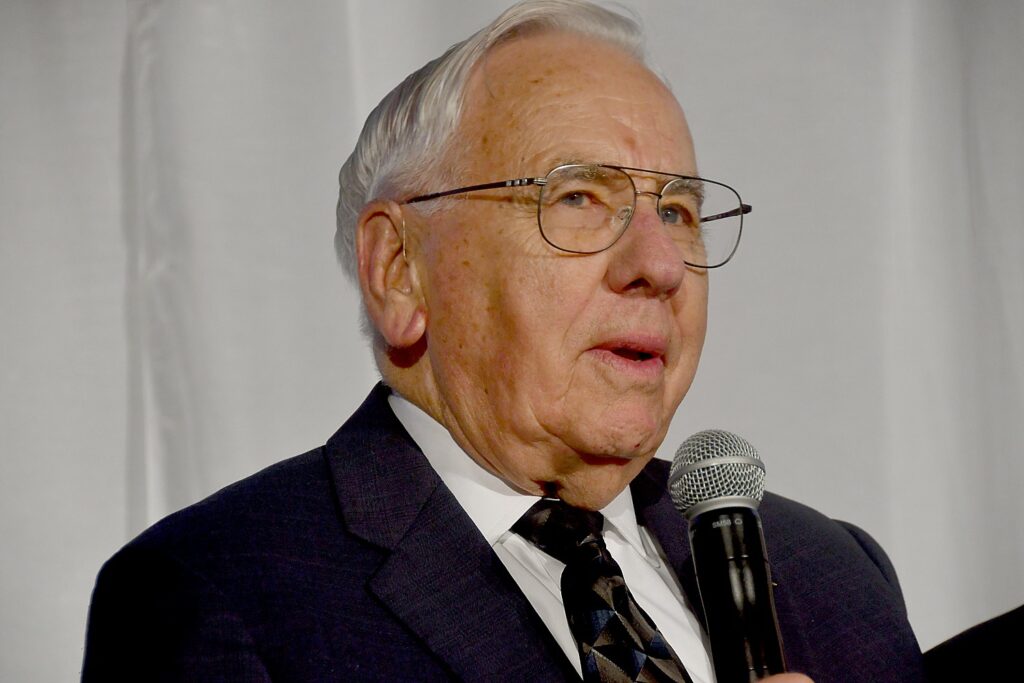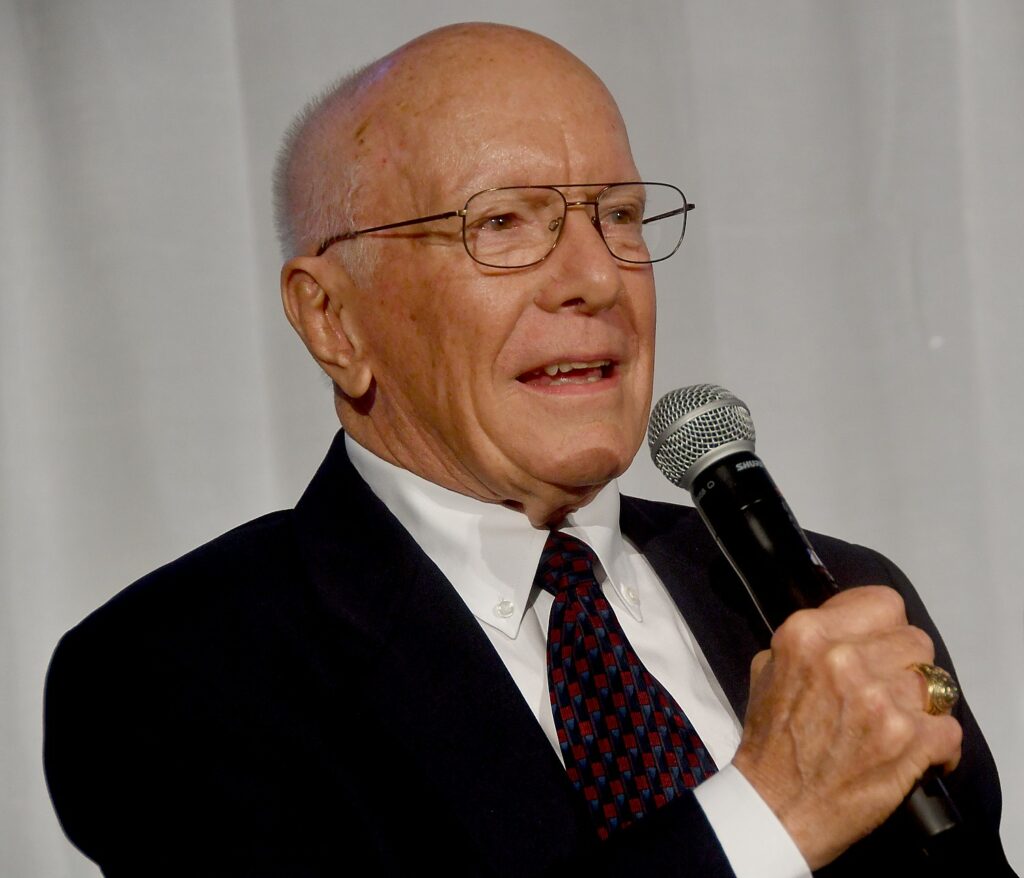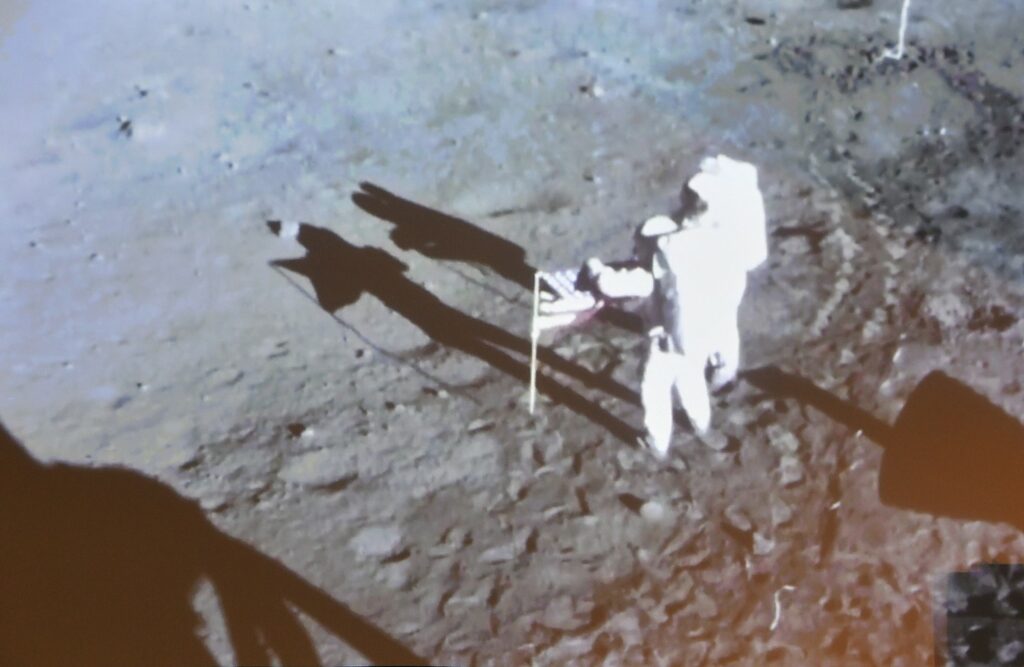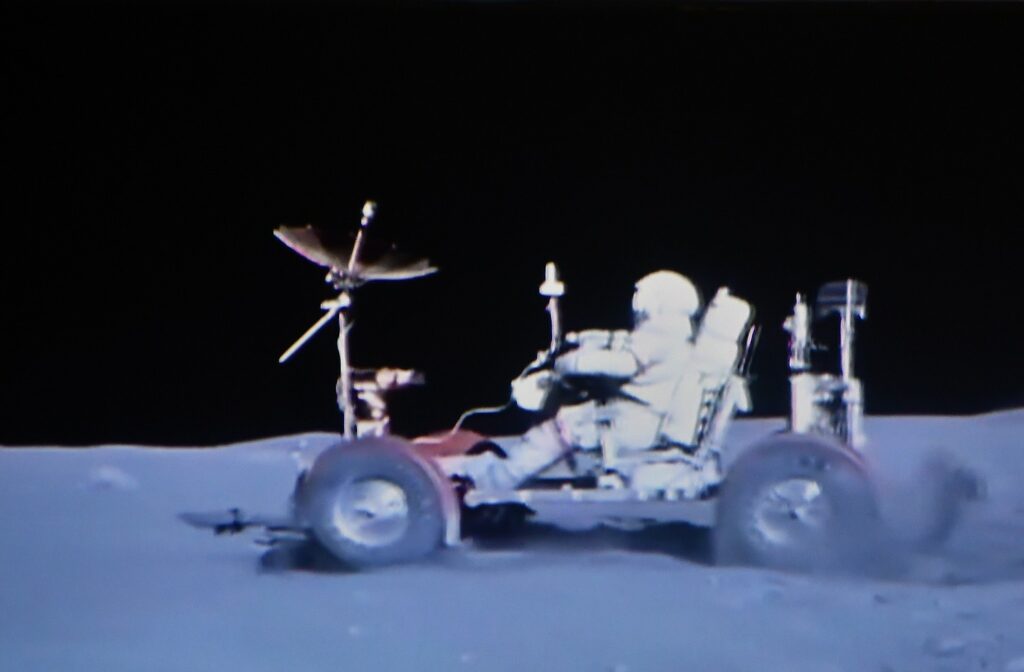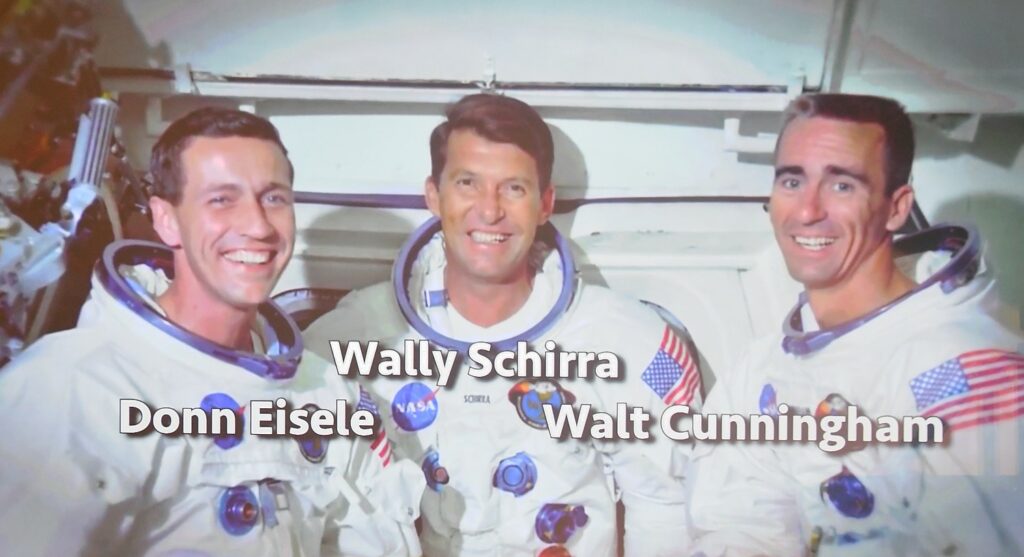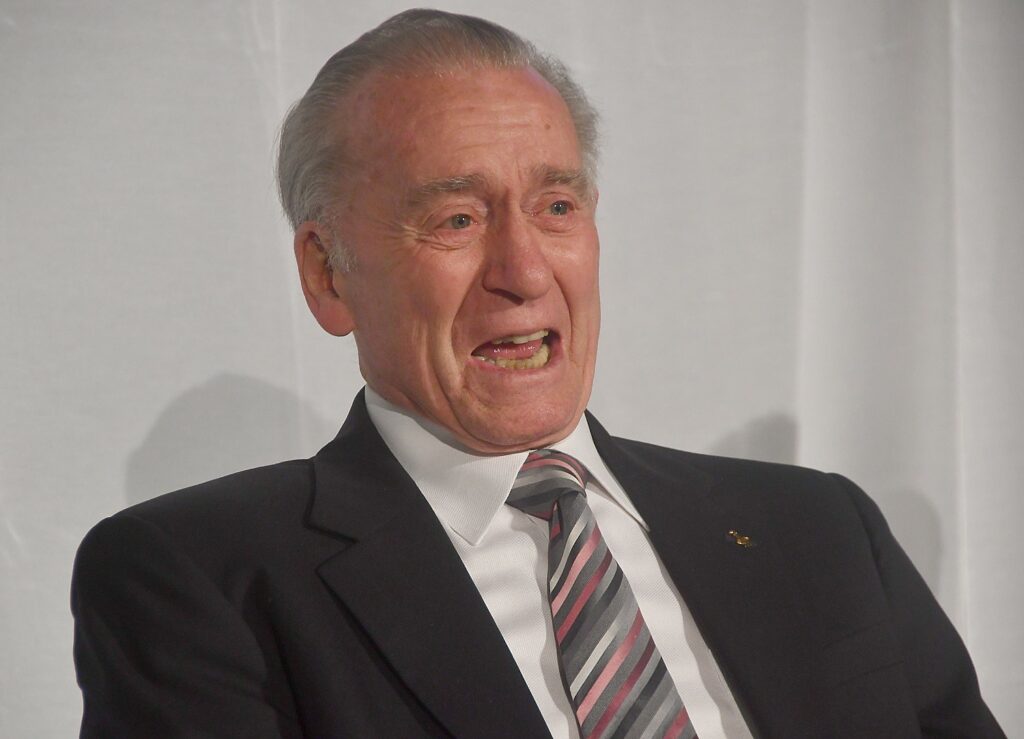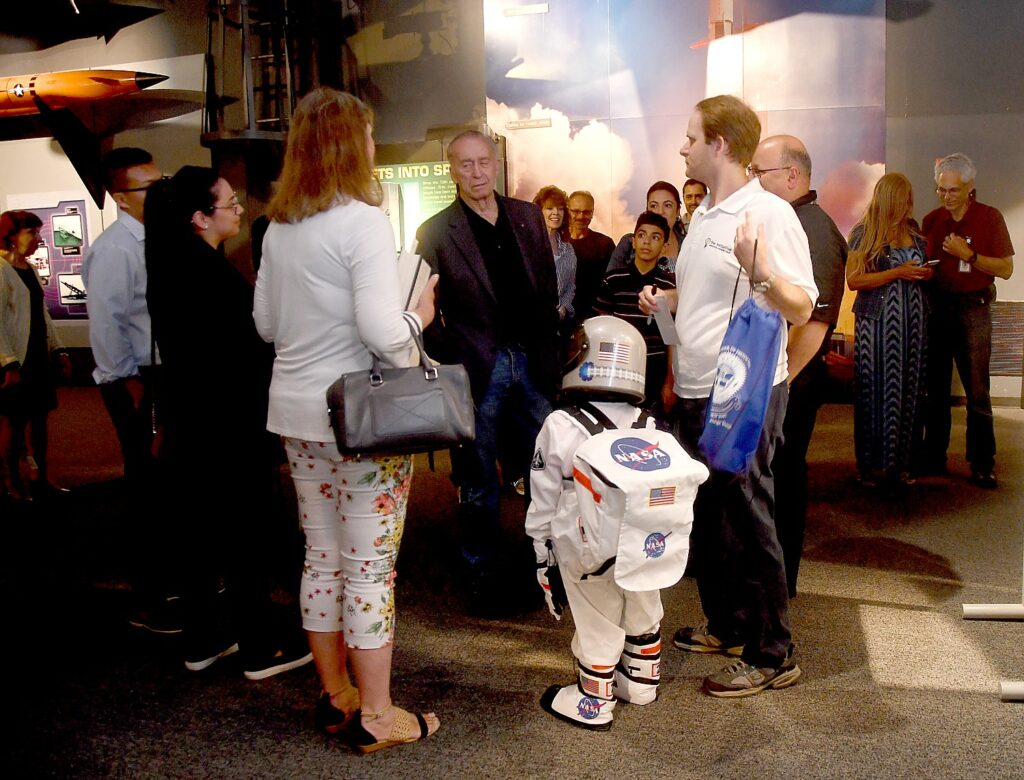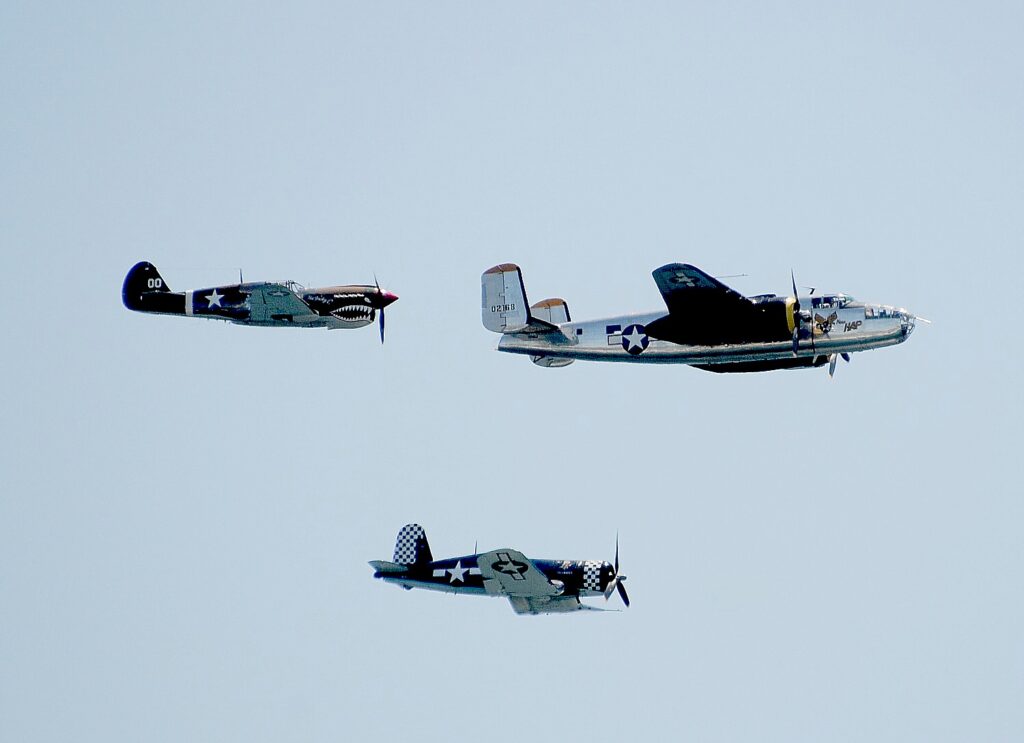
by Karen Rubin
Travel Features Syndicate, goingplacesfarandnear.com
What makes Long Island’s American Airpower Museum, located at historic Republic Airport in Farmingdale, so different from other aviation museums is that this is so much more than a static display of vintage aircraft. This is living history: just about every day you visit, you can see these historic aircraft fly – you can even purchase a seat.
Long Island’s only flying military aviation museum, which is celebrating its 20th anniversary this year, reopened after its COVID-19 hiatus, with new health protocols and precautions.
Its impressive collection was started by Jeffrey Clyman, president of the museum and the foundation.

His first acquisition was the P10-17 WWII training biplane which used to fly in air shows. His second was the Avenger. The third, the AT-6 “Texan” came from the Spanish air force where it was used for desert warfare in the Sahara
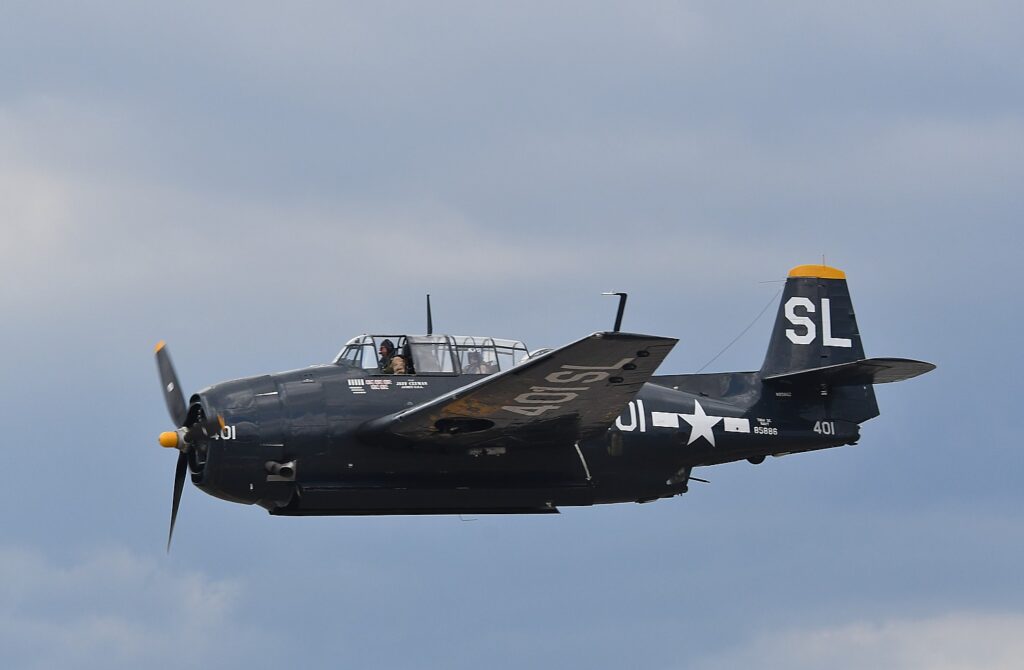
Among them, the Grumman TBM Avenger, the same plane model flown by President George H.W. Bush in WWII in which he was shot down (the other two crew members did not survive); you can see where Bush autographed this plane. Known as the “ship killer,” so many Japanese ships were destroyed by the torpedoes it carried, that upon seeing it coming, crew would jump off, the museum’s publicist, Bob Salant, tells me during my visit on reopening day.
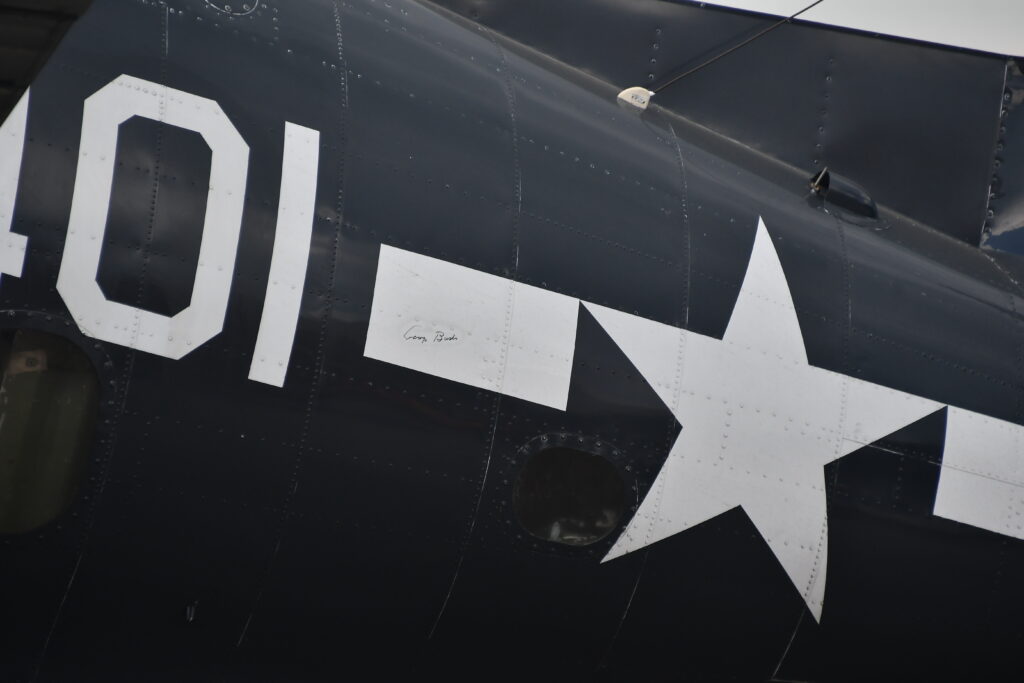
You can actually buy a seat for a flight in the WACO UPF-7 biplane (the initials stand for Weaver Aircraft Company of Ohio) and a North American AT-6 Texan, which give you the unparalleled experience of flying with an open cockpit. You can also buy a seat in a D-Day reenactment flying aboard the WWII Veteran Douglas C-47 Gooney Bird, which carried parachutists – you wear an appropriate uniform, there is the radio speech of President Eisenhower sending the troops into this fateful battle, and while you don’t actually parachute, at the end, you are given a card that says whether you lived or died.

That’s what “Living history” means to the American Airpower Museum.
Indeed, just about all the aircraft you see in the hangar and on the field (a few are on loan), are working aircraft and have to be flown to be maintained, so any time you visit, you are likely to see planes flying.
Among the planes that played an important role in history is the “Mis-Hap” – a North American B25 Mitchell bomber that few in the Doolittle Raid on Tokyo. It was General Hap Arnold’s personal plane (subsequent owners included Howard Hughes).

Another is the Macon Belle, on view in a fascinating exhibit that pays homage to the Tuskegee Airmen, one of whom, William Johnson is a Glen Cove resident. The Tuskegee Airmen were the first black military aviators in the U.S. Army Air Corps during WWII. They flew more than 15,000 individual sorties in Europe and North Africa, earning more than 150 Distinguished Flying Crosses.
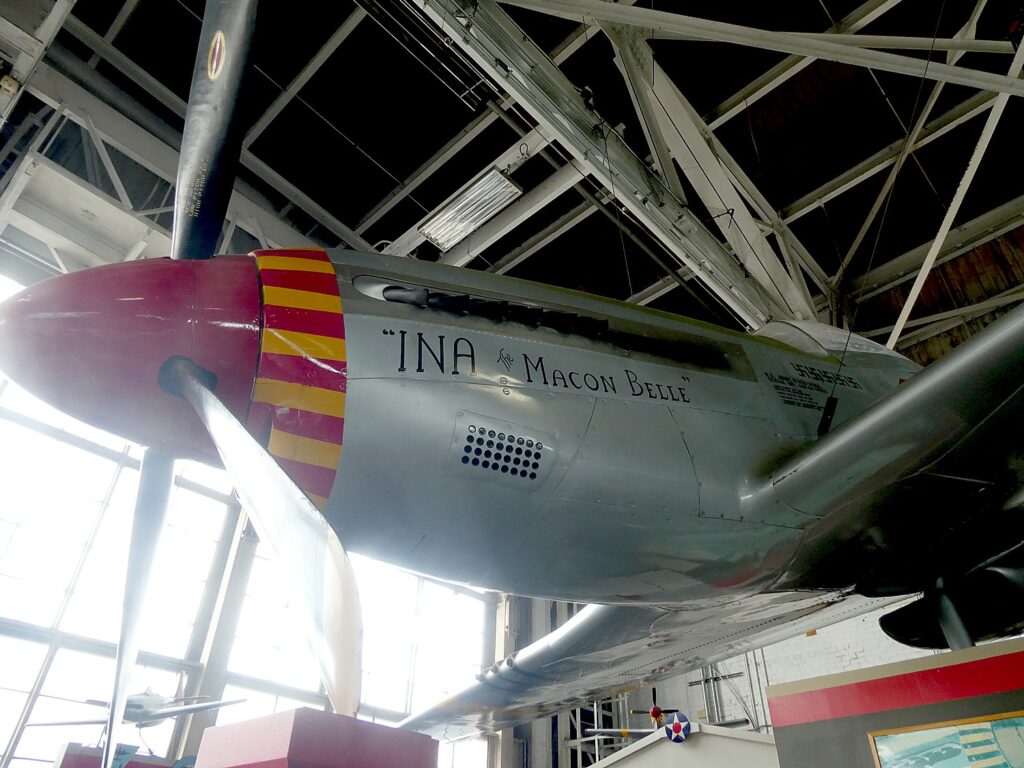
2020 was anticipated to be a banner year for AAM. Museum aircraft were scheduled to participate in historic events marking the 75th anniversary of the end of WWII and honoring U.S. Veterans who made the Allied victory possible. As they have done for the last 17 years, AAM’s WWII airplanes were going to appear in the Annual Jones Beach Airshow. And it must be noted that on May 24th 2020, the American Airpower Museum celebrated its 20th anniversary in isolation.
Instead, the museum had to shut down along with every other museum and attraction in the state because of the coronavirus. It has reopened with health protocols that include filling out a questionnaire and having a temperature check at the entrance; requiring masks and social distancing throughout the museum.
Certain interactive exhibits have been closed, but you can still climb stairs to see inside cockpits, and walk through the Douglas C-47B. Built in 1935 and in service since 1936, the DC3 started as one of the first commercial civilian airliners. It was best known for being used in the Berlin Airlift, dropping food, clothing and medical supplies to Berliners suffering under the Soviet occupation. This C47 was one of the few flyable C47s with a paratrooper configuration, and dropped troops for the D-Day invasion. The plane is dubbed “Second Chance” possibly because after World War II, it was sold to the State of Israel and saw more than 30 years in the Israeli military (very possibly flew in the 1967 war). Today, the C-47B is used in D-Day reenactments.

There are several excellent exhibits, including one showcasing the WASPs – the Women Airforce Service Pilots who were used to fly planes to their missions. Another focuses on women war correspondents, among them, Martha Gellhorn, considered one of the great war correspondents of the 20th century, reporting on virtually every major world conflict over her 60-year career (she was also the third wife of novelist Ernest Hemingway).
There are also several fighter jets on loan from the USAF Museum, including a Republic F-84 Thunderjet; Republic RT-84 Thunderstreak, Republic RF-084 Thunderflash, Republic F105 Thunderchief, and General Dynamics F-111.
Clyman, who started his museum in New Jersey, moved it to Farmingdale, Long Island, the “cradle of aviation,” where many of these planes were built, and where the people who built them, maintained them and flew them, still lived. Many of the docents as well as the pilots are former Republic workers and veterans.
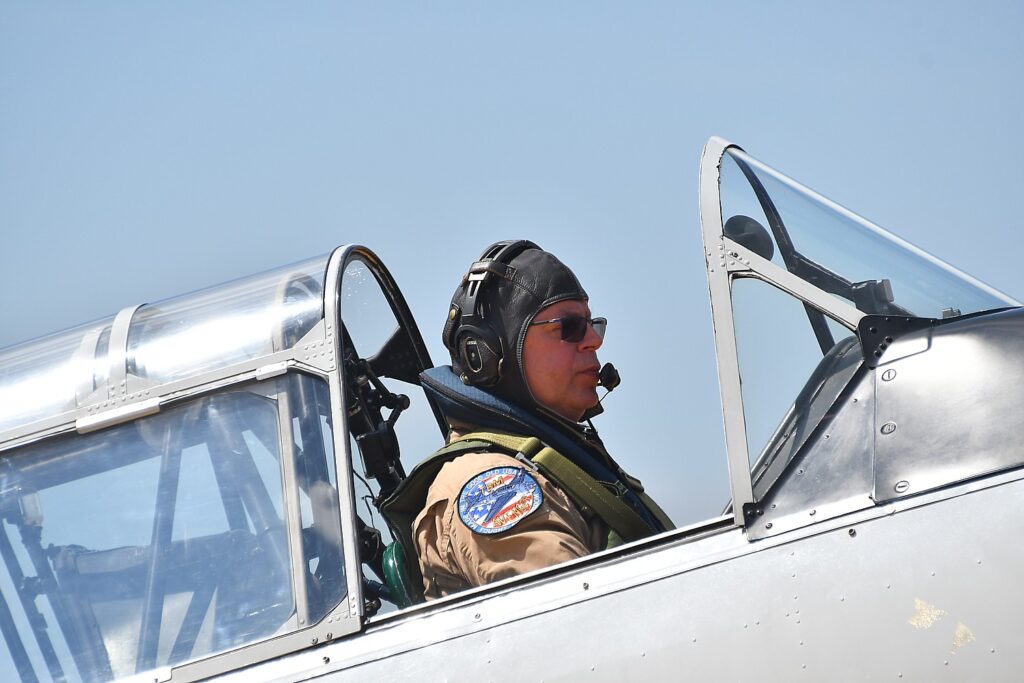
“My dad was a combat pilot in WWII. So was my uncle. My mom was a nurse,” Clyman tells me. “But just as the 1920s followed WWI, and the 1950s after WWII, they didn’t talk about their experiences in war until they were about to die.” His mission is to not only legacy of the planes, but honor the people.
“Some 65 years ago, the current home of the American Airpower Museum at Republic Airport was a crucial part of the ‘Arsenal of Democracy’. Home to Republic Aviation, the complex produced over 9,000 P-47 Thunderbolts in Farmingdale,” the museum’s website explains.
“Today, no American aviation museum with a squadron of operational World War II aircrafts has a more appropriate setting for its flight operations. Taxing to the very runways and hangars that dispatched Thunderbolts to war, vintage aircrafts recreate those turbulent years and allow the public to watch these planes in their natural environment – the air.”
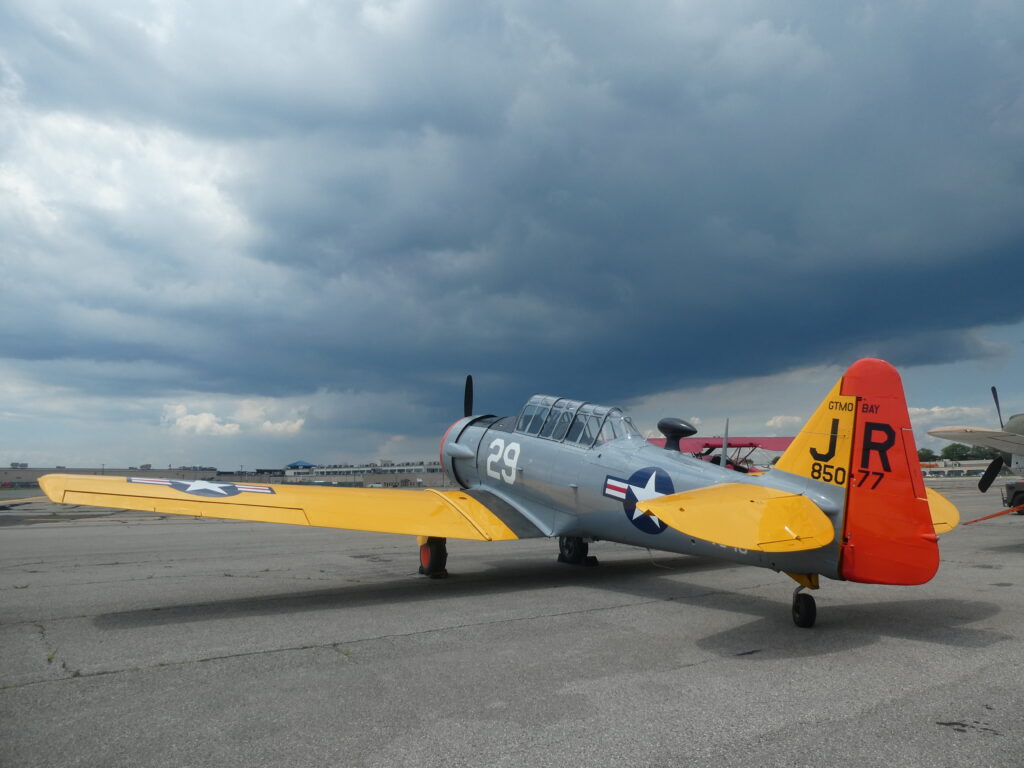
The hangar where the museum is located is now part of a historic preservation district, as a result of the effort of Senator Charles Schumer and then-Congressman Steve Israel.
There are uniforms, equipment, even two Nikon cameras adapted for use by astronauts that flew in the Space Shuttle.
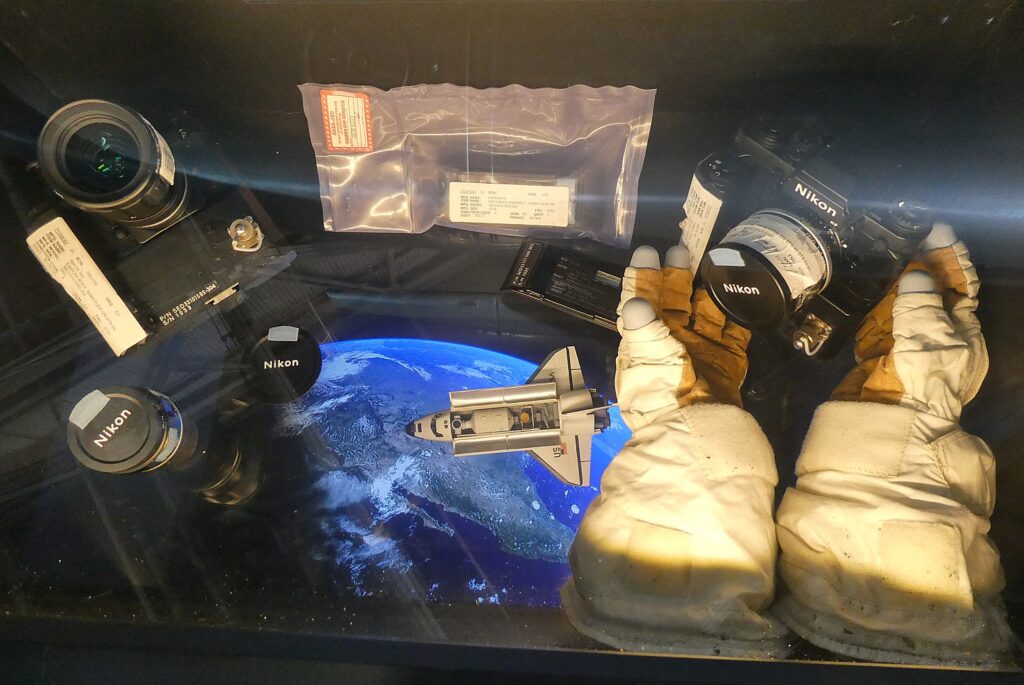
Clyman said it has always been AAM’s mission to honor the legacy of those who gave all to preserve our freedoms. “We’re pleased to announce we recently resumed maintenance and inspection of our aircraft so that much anticipated flight operations can begin with our grand reopening event. We also promise a flying salute to our Veterans and front line workers very soon,” he said.
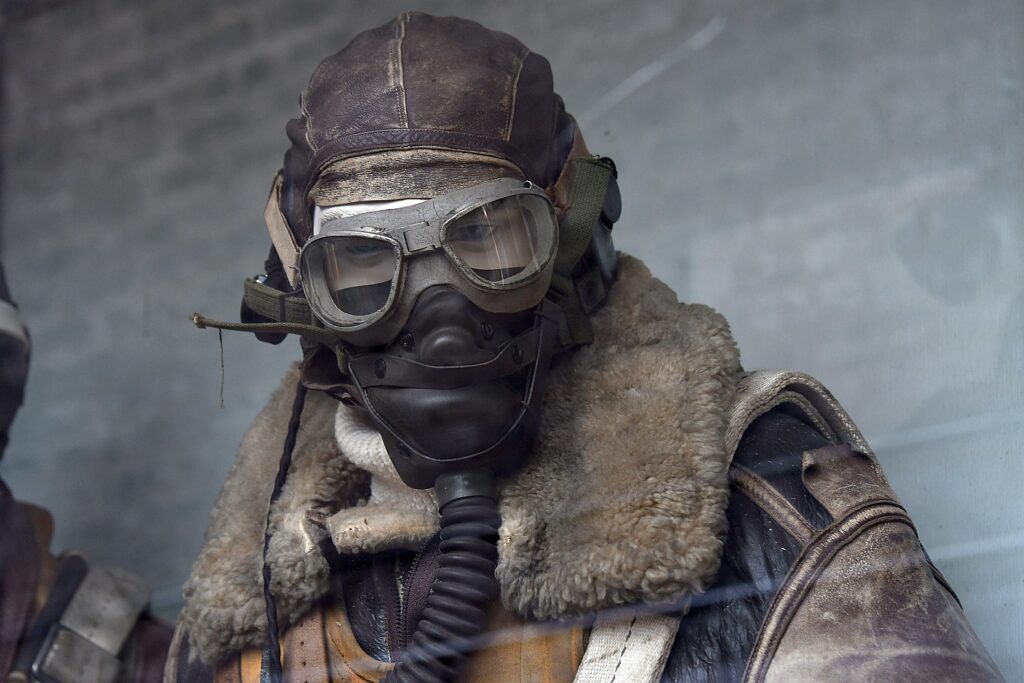
At the reopening on August 1, visitors were treated to aircraft displays and flight operations of WWII AT-6s, WACO UPF-7, and TBM Avenger.
The museum is open to only 55 visitors at one time. There will be a case by case increase should the flight line be open, to increase the number of visitors at one time. Face masks must be worn at all times by anyone who will work, and visit the museum (masks are for sale in the gift shop for anyone who does not have one). Visitors have their temperature taken as they enter, and are encouraged to wash hands, or use hand sanitizer (hand sanitizer is available in the gift shop, and by the restrooms). Social distancing will be observed and the floors have been marked to denote 6 feet spacing. Restrooms and canteen areas are regularly cleaned.
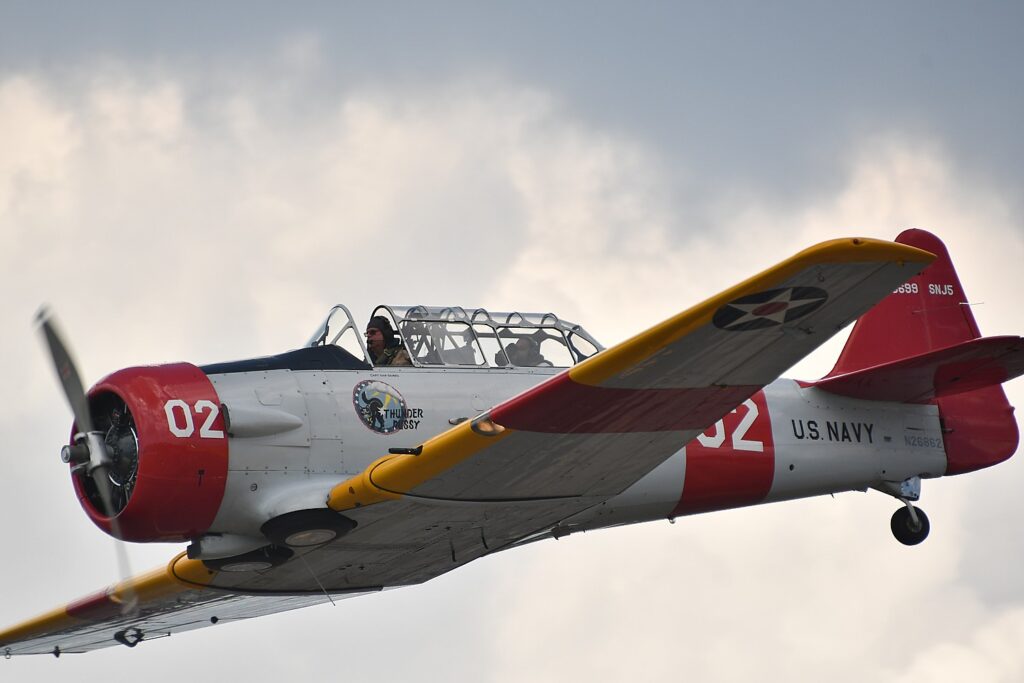
The C-45 cockpits are not currently open, but the Flight Simulator may be available for use on a case by case basis, and cleaned after each use. Docents will also guide visitors accessing certain aircraft and limit the number of visitors at one time.
One of the docents is Steven Delgado who came to New York from Puerto Rico at the age of 15, was drafted to go to Vietnam in 17 and served in a parachutists unit. “I learned English in the army). When he returned, he earned his CPA from NYU and became a volunteer fire fighter.
The museum, a 501 (C3) Nonprofit Educational Foundation, is open year-round, rain or shine.
Admission for adults is $13, seniors and veterans $10 and children $8.
The American Airpower Museum, Hangar 3, 1230 New Highway, Farmingdale, NY 11735, 631-293-6398,[email protected], www.americanairpowermuseum.com.
______________________
© 2020 Travel Features Syndicate, a division of Workstyles, Inc. All rights reserved. Visit goingplacesfarandnear.com, www.huffingtonpost.com/author/karen-rubin, and travelwritersmagazine.com/TravelFeaturesSyndicate/. Blogging at goingplacesnearandfar.wordpress.com and moralcompasstravel.info. Send comments or questions to [email protected]. Tweet @TravelFeatures. ‘Like’ us at facebook.com/NewsPhotoFeatures
